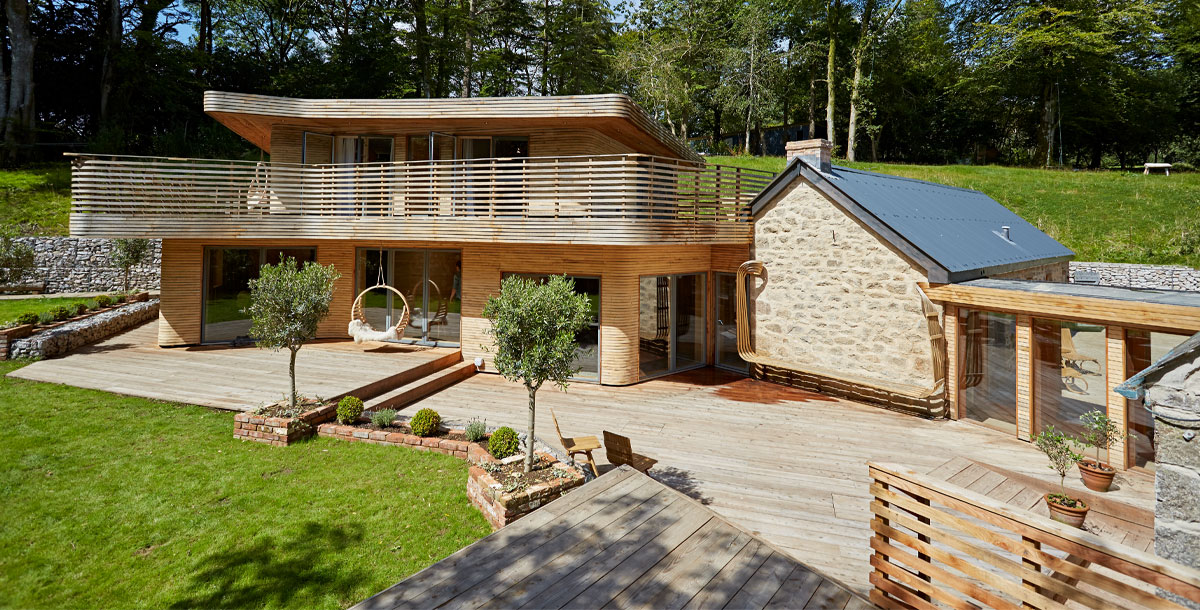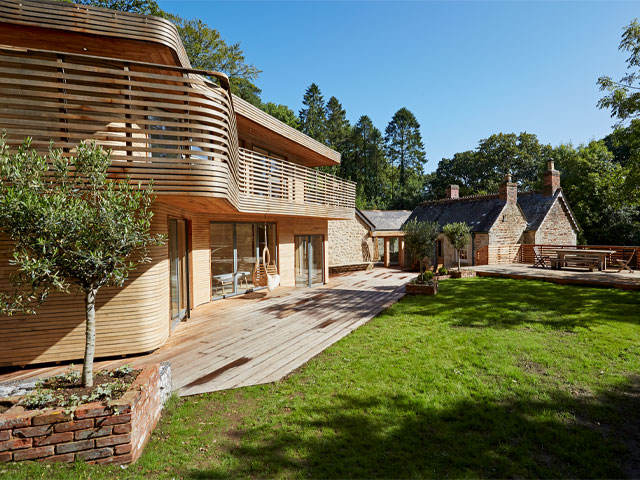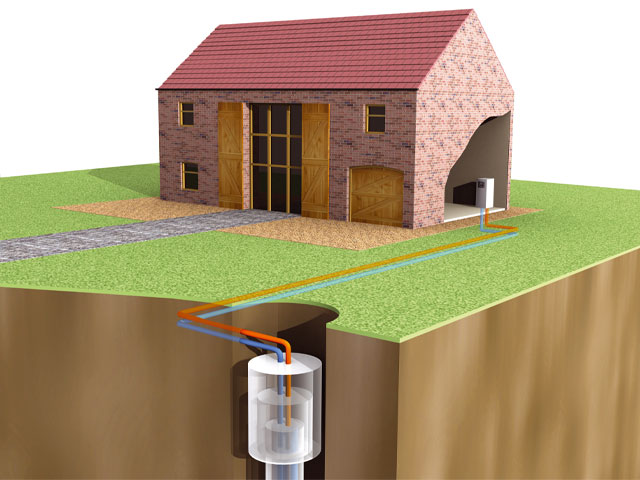Ground source heat pumps: a buyer’s guide
There's a store of thermal energy beneath our feet that can be harnessed to heat our homes
You may be familiar with solar power, but what do you know about ground source heat pumps? A GSHP can transfer three times more energy into the home than they use to extract it, making it a sustainable way to heat a home.
What is a ground source heat pump?
Two metres below ground the soil maintains a fairly consistent temperature of around 10ºC and is unaffected by cold weather. This thermal energy is something that can be harnessed. Powered by electricity, a ground source heat pump extracts warmth from the earth using collecting pipes buried below the surface.
A solution of water and antifreeze flows through the pipes, picking up warmth as it moves. This liquid is channelled to a heat pump unit, most often kept inside the house, where it is concentrated to a higher temperature and distributed to radiators, underfloor heating and hot water storage.
Ground source heat pump installation
A garden must be accessible to digging machinery with ground that is suitable for creating trenches or a borehole. Coiled pipes are known as slinkies, and a meander pattern is laid straight and runs back and forth.
‘A typical three-bedroom house using slinky pipes laid in trenches requires about 40x12m of land. Boreholes range from 60-200m deep and are around 150mm wide. If a home has insufficient land area for slinkies or no access for a borehole drilling rig, ground source may not be viable,’ says David Billingsley, director of sales at Kensa Heat Pumps.
Installation via vertical boreholes is usually more expensive as it requires a specialist drilling rig. Most use the closed loop system, where a pipe loop shaped like a hairpin is dropped into the borehole and sealed in. Multiple boreholes are usually required unless the house is small or very well-insulated.
The timeline
‘The pump unit is usually installed once the building is weathertight and the services are in place,’ says Phil Hurley, managing director at Nibe. ‘The groundworks phase varies, but usually takes around three weeks. GSHP installation is subject to Building Regulations and your local authority will need to be notified upon completion.
The heat pump appliance is about the size of a fridge-freezer and most often kept inside the house. ‘It’s best to put the unit where it can be maintained easily,’ says Phil. ‘The area must provide an appropriate route for associated pipework, especially the ground collector loops, which need to be well insulated along the entire length.’
Can a GSHP be retrofitted?
Typically, GSHPs are well suited to self-builds, as the plot will be excavated to put in the foundations, but that doesn’t mean they aren’t possible for renovations. ‘It’s a myth that GSHPs can’t be successfully retrofitted into older properties,’ says David Billingsley.
‘But the more thermally efficient a house is, the easier it will be to heat effectively with any type of system. Better insulation will result in higher heat pump efficiency and lower running costs.’
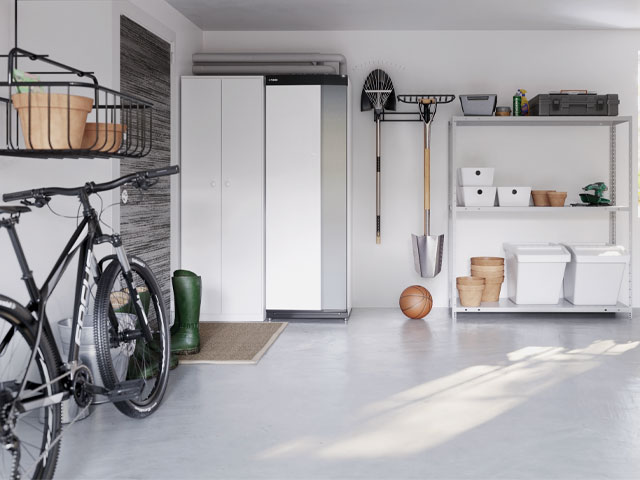
The S1255 from Nibe has a heat output of 6kW and is priced from £12,000
How much does a ground source heat pump cost?
Generally speaking, a ground source heat pump costs typically between £14,500 and £45,000, depending on the type of ground source heat pump you install according to greenmatch. ‘The average three-bedroom UK home has a heat demand of 8-10kW. To supply and install a suitable pump using horizontal pipework would cost between £12,000 and £14,000,’ says Phil Hurley. ‘A borehole installation can cost between £20,000 and £25,000.’
Units have a service life of around 20 years, while the collecting pipework can last up to 100. Plus, you may be able to recoup some of the installation cost from the government’s Domestic Renewable Heat Incentive (Domestic RHI) scheme – a financial reward for those who install renewable energy sources in their homes.
Average running costs depend on the thermal efficiency of the building and its heat demand. ‘The 9kW Evo GSHP would run at 0.44p/kWh with an estimated running cost of £887.40 per year, based on a 200sqm, four-bed new-build home in the south-west of England with a heat load of 8kW,’ says David Billingsley.
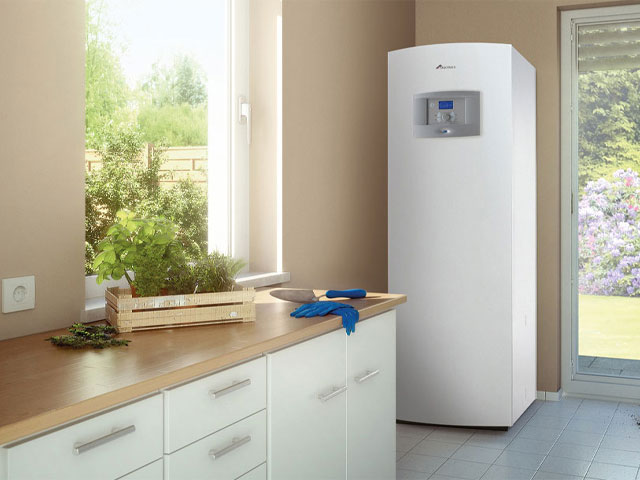
Greenstore Low Energy Circulation Pump. Photo: Worcester Bosch
Maintaining your GSHP unit
GSHPs have few moving parts and upkeep is minimal. ‘As an electrically powered, non-combustion appliance it requires little maintenance,’ says David. ‘I advise homeowners to get their system, including radiators and/or underfloor heating, pressurised hot water cylinders, ground collectors and the heat pump, checked by a competent installer before the colder months set in.’
Having a good supply of hot water and effective heating are the surest signs your system is operating at its best. Some models, such as the Nibe S-Series and Kensa’s Evo heat pump, come with a smart controller or app that allows you to monitor the set-up in real time, so you will receive notifications regarding any problems.

